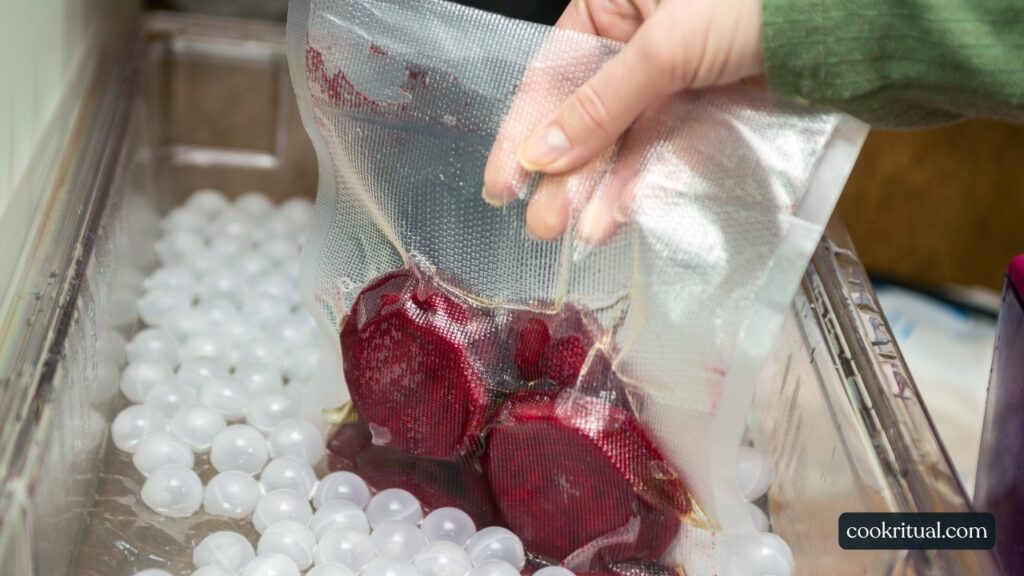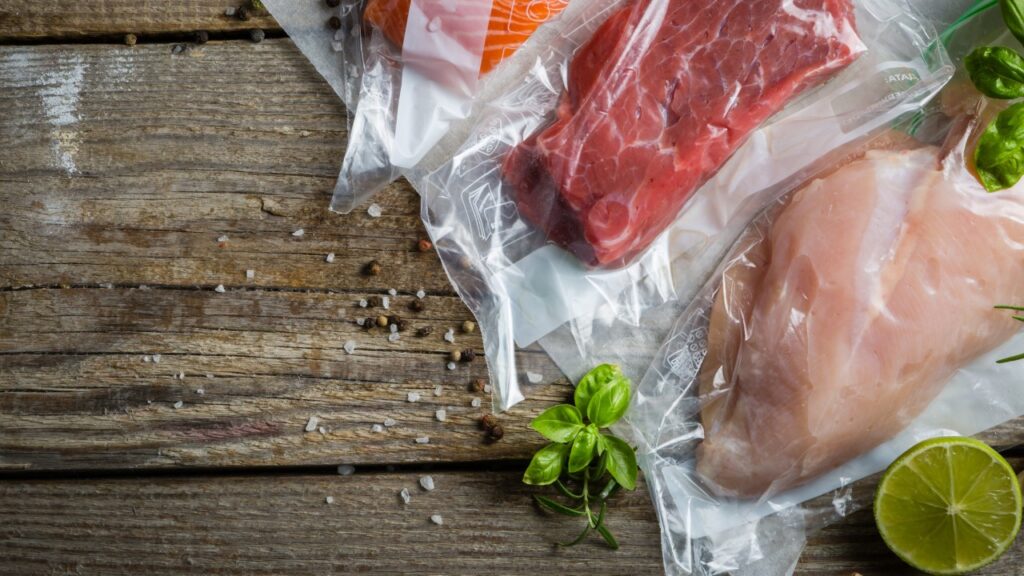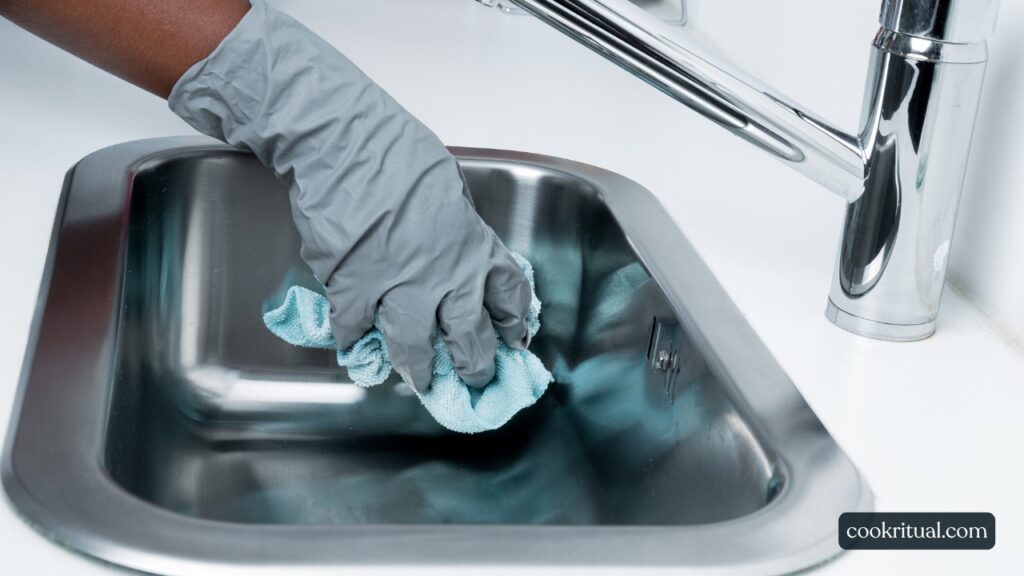Sous vide cooking is one of the easiest ways to achieve perfectly cooked meals—every single time. Whether it’s juicy chicken, tender steak, or crisp vegetables, this gentle water-bath technique guarantees consistent, restaurant-quality results with minimal effort.
For health-conscious eaters and busy professionals in the U.S., sous vide offers the ideal balance between precision, nutrition, and convenience. There’s no guesswork. No overcooking. Just delicious, stress-free meals—even if you’re new to the kitchen.
In this beginner-friendly guide, we’ll break down everything you need to know about sous vide: how it works, what gear you need, easy recipes to try, and expert tips to make it part of your weekly meal plan. Whether you’re cooking for one or prepping meals for the week, this guide is your shortcut to mastering sous vide with confidence.
Contents
- 1 How Sous Vide Works: The Science Behind Precision Cooking
- 2 Essential Tools You Need to Start Sous Vide at Home
- 3 Step-by-Step Guide: How to Use a Sous Vide Cooker for the First Time
- 4 Sous Vide Time and Temperature Chart for Common Foods
- 5 Best Sous Vide Recipes for Beginners
- 6 Benefits of Sous Vide Cooking
- 7 Common Mistakes to Avoid When Using a Sous Vide Machine
- 8 Sous Vide vs Traditional Cooking Methods
- 9 How to Maintain and Clean Your Sous Vide Equipment
- 10 Conclusion: Why Sous Vide Is Worth Trying Today
How Sous Vide Works: The Science Behind Precision Cooking
What Makes Sous Vide So Different?
Sous vide (pronounced “soo veed”) means “under vacuum” in French. It’s a method where food is sealed in a bag and cooked slowly in a warm water bath. The temperature stays steady the whole time. That’s what makes it so special.
Instead of guessing if meat is done or checking a thermometer every few minutes, we just set the exact temperature we want. The water keeps that temp steady, so food cooks evenly from edge to center.
This method is backed by food science. When food cooks at a steady, lower heat, it holds onto its juices, nutrients, and flavor. That’s why restaurants use it for perfect texture and taste.
Learn more about the science of sous vide from Serious Eats.
Why Beginners Love It
- No overcooking – It stops cooking once it hits the right temperature.
- Hands-free cooking – Start it and walk away.
- More nutrients stay in the food – Great for healthy eaters.
- Meal prep friendly – Cook ahead and store in the fridge.
Essential Tools You Need to Start Sous Vide at Home
Your Sous Vide Starter Kit
Getting started doesn’t mean spending a fortune. Here are the basic tools you need:
- Sous Vide Machine (Immersion Circulator) – This is the heart of the setup. It heats and circulates the water. Top picks include the Anova Precision Cooker or Breville Joule.
- Container or Pot – You can use a regular stockpot or buy a clear plastic container made for sous vide.
- Food-Safe Bags or Jars – Use BPA-free zip bags, reusable silicone bags, or mason jars for things like eggs and desserts.
- Vacuum Sealer (Optional) – A vacuum sealer helps remove all the air for better cooking, but it’s not required. Zip-top bags work fine for beginners.
- Clips or Rack – These keep the bags in place in the water bath.
Need help choosing a machine? Check out this guide from America’s Test Kitchen.
Budget-Friendly Tips
- No vacuum sealer? Use the water displacement method. Just place food in a zip-top bag, seal almost shut, and lower into water to push air out.
- Try sous vide cooking with a cooler as your water bath. It holds heat well!
Step-by-Step Guide: How to Use a Sous Vide Cooker for the First Time
Simple Steps for Perfect Results
Starting your first sous vide meal? Here’s how to do it, step-by-step:
- Fill your container or pot with water. Attach your sous vide machine and set the temperature based on your recipe.
- Prep and season your food. Salt, pepper, herbs, and garlic work well. Don’t go overboard—flavors get stronger with sous vide.
- Seal the food. Use a vacuum sealer or zip-top bag. Try to remove as much air as possible.
- Place in the water bath. Once the water hits the right temp, put your sealed bag in. Clip it to the side if needed.
- Let it cook. It may take 1–4 hours, depending on the food. Steak usually takes about 1.5 hours at 130°F.
- Finish with a quick sear. Once done, remove the food and pat dry. Sear in a hot pan for 30–60 seconds per side for flavor and color.
For more tips, check out this sous vide cooking chart from USDA Food Safety.
Sous Vide Time and Temperature Chart for Common Foods
Cook with Confidence Using These Simple Guidelines

Getting the time and temp right is key to perfect sous vide results. Since food cooks at lower temperatures, it’s important to follow tested guides. Here’s a basic chart to help:
| Food | Temperature | Time Range | Texture Outcome |
| Steak (medium-rare) | 130°F (54°C) | 1.5 – 4 hours | Juicy, pink center |
| Chicken breast | 140°F (60°C) | 1.5 – 4 hours | Tender and moist |
| Salmon fillet | 125°F (52°C) | 30 – 45 minutes | Soft, flaky, rich flavor |
| Eggs (soft yolk) | 145°F (63°C) | 45 – 60 minutes | Jammy center |
| Carrots | 183°F (84°C) | 1 – 1.5 hours | Sweet, slightly firm |
| Pork chops | 140°F (60°C) | 1 – 3 hours | Juicy and fully cooked |
For more detailed cooking times, visit Sous Vide Cooking Charts at Anova Culinary.
Tip: Always finish meats with a quick sear after cooking for color and extra flavor. That’s what gives it that restaurant look!
Best Sous Vide Recipes for Beginners

Easy and Healthy Meals Anyone Can Make
If you’re new to sous vide, start with these simple recipes. They’re easy, delicious, and perfect for healthy eating.
- Sous Vide Chicken Breast – Season with garlic, lemon, and herbs. Cook at 140°F for 2 hours. Great for salads, bowls, or sandwiches.
- Perfect Sous Vide Steak – Just salt, pepper, and a sprig of rosemary. Cook at 130°F for 1.5 hours, then sear for a crisp crust.
- Sous Vide Salmon – A touch of olive oil and dill. Cook at 125°F for 45 minutes. It’s buttery and packed with Omega-3s.
- Soft-Cooked Eggs – Cook at 145°F for 45 minutes. Perfect over toast or grain bowls.
- Sous Vide Vegetables – Carrots, sweet potatoes, and beets turn tender and sweet at 183°F.
Explore more beginner-friendly recipes at Serious Eats Sous Vide Recipe Index.
Bonus Tip: Make a big batch and store extras for the week. Sous vide is meal prep friendly and helps reduce food waste.
Benefits of Sous Vide Cooking
Why Home Cooks Love This Method
Sous vide cooking has grown in popularity for good reason. Here are some of its top benefits:
- Precise temperature control – No more guessing if meat is done.
- Better nutrition – Lower cooking temps help retain more vitamins and minerals. Harvard Health supports gentle cooking methods for preserving nutrients.
- Enhanced flavor – Sealed bags lock in herbs, spices, and juices.
- Hands-off cooking – Just set it and forget it.
- Perfect for meal prep – Cook large batches, cool, and store them safely.
And yes—it’s great for beginners. There’s little room for error, and you don’t need a full kitchen to get started.
Learn how sous vide supports clean eating and time-saving on Cleveland Clinic’s Healthy Cooking Tips.
Common Mistakes to Avoid When Using a Sous Vide Machine
Avoid These to Get the Best Results
Even though sous vide cooking is easy, small mistakes can affect the outcome. Here are the most common ones and how to fix them:
- Not removing air from the bag – Air creates pockets that stop even cooking. Use a vacuum sealer or try the water displacement method.
- Setting the wrong temperature – Double-check recipe temps before cooking. Even a few degrees can change texture.
- Skipping the sear – Searing adds flavor and color. Always pat the food dry and use a hot pan after cooking.
- Crowding the pot – Too many bags block water flow. Keep space between them for even heat.
- Using unsafe bags – Stick with BPA-free, food-safe plastic or silicone bags made for sous vide.
Learn how to avoid these and other beginner mistakes at The Spruce Eats Sous Vide Guide.
Sous Vide vs Traditional Cooking Methods
What Makes Sous Vide Stand Out?
Here’s how sous vide compares with everyday cooking methods:
| Method | Control | Flavor Retention | Ease for Beginners | Nutrition |
| Sous Vide | Very precise | Excellent | Very easy | Very high |
| Oven Baking | Moderate | Good | Easy | Moderate |
| Pan Frying | Low | Varies | Medium | Medium |
| Boiling | Poor | Poor (flavor loss) | Easy | Low |
With traditional cooking, heat can be uneven, leading to dry or overcooked food. But with sous vide, food is cooked evenly and gently, giving better taste and texture every time.
See more comparisons at Serious Eats: Sous Vide vs. Other Methods.
How to Maintain and Clean Your Sous Vide Equipment

Keep It Clean for Safe and Tasty Meals
Cleaning your sous vide machine helps it last longer and keeps your food safe. Here’s how:
- Rinse after each use – Let the unit cool, then wipe the wand or circulator with a damp cloth.
- Deep clean monthly – If you see build-up, run a mix of water and vinegar through the machine.
- Dry fully before storing – This keeps it from rusting or growing mold.
- Wash bags or containers – Reusable bags and plastic tubs should be washed with warm, soapy water.
Follow full cleaning steps in this guide from Anova Culinary.
Taking a few minutes to clean your tools helps make sous vide cooking safer and more enjoyable every time.
Conclusion: Why Sous Vide Is Worth Trying Today
Sous vide is the easiest way to cook healthy, tasty meals without stress. It’s safe, hands-free, and perfect for busy home cooks who want reliable results. Whether you’re cooking a single steak or prepping meals for the week, sous vide makes life easier in the kitchen.
With a little practice, we can cook better meals, waste less food, and enjoy flavors like never before. Now is the time to try it out!


